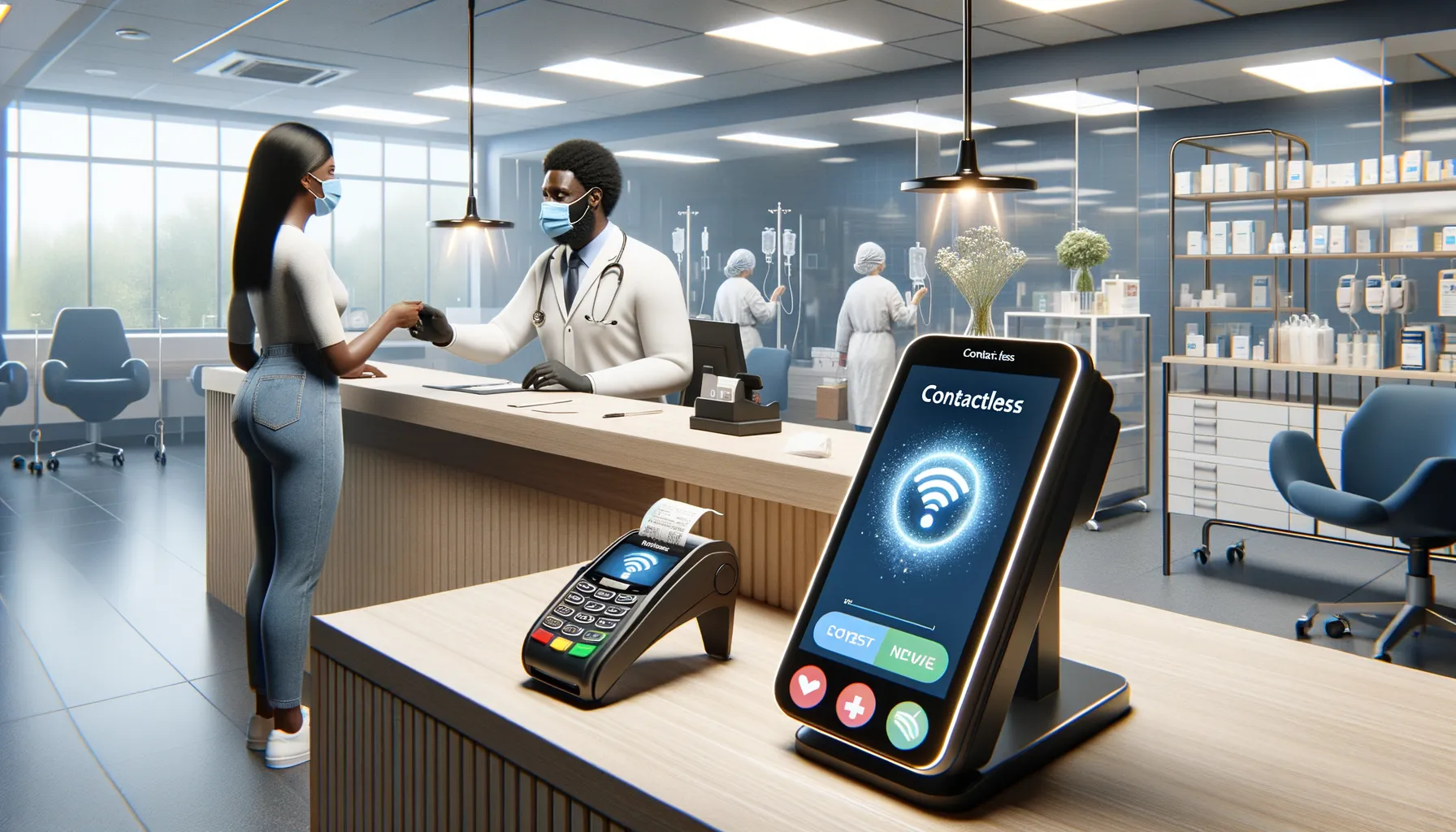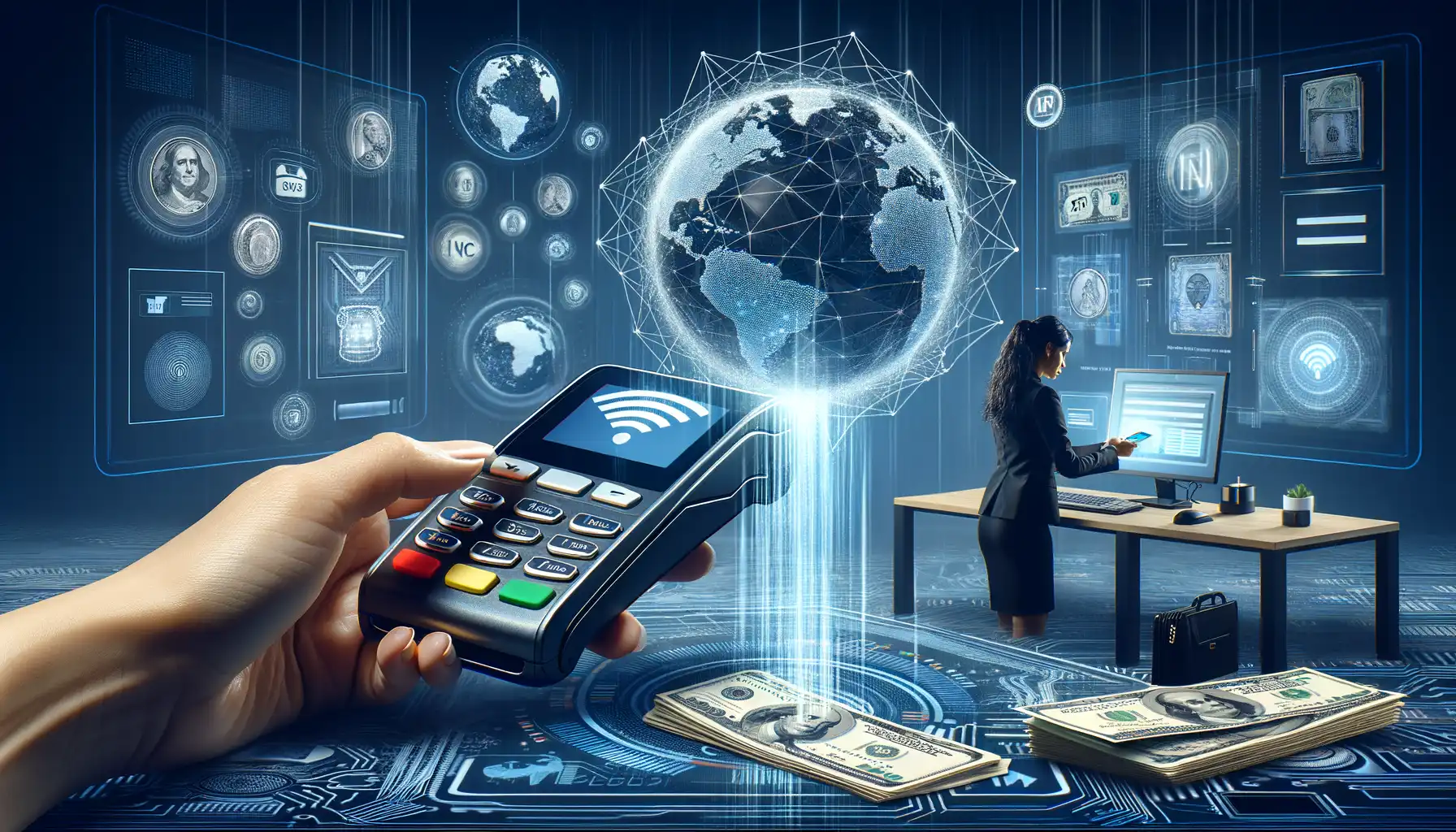Introduction to Contactless Payment Technology in Healthcare
Revolutionizing Payments: A New Era for Healthcare
Imagine walking into a hospital or clinic, nervous about your health but relieved you won’t have to fumble through your wallet or touch a single germ-covered keypad. Welcome to the world of contactless payment technology in healthcare—a world that promises not just convenience but also a safer, more empathetic patient experience.
Gone are the days of scrambling for cash or handing over your credit card. With just a tap from your smartphone or smartwatch, your payment is processed in seconds. It’s a small change with a big impact, especially in environments where hygiene and efficiency are paramount—think crowded emergency rooms or bustling pharmacies.
Here’s what makes it special:
- Zero-contact transactions reduce the risk of spreading germs—an absolute game-changer during flu seasons or outbreaks.
- Speed and simplicity mean shorter wait times, helping staff focus on care instead of paperwork.
It’s not just about tech—it’s about trust. These systems create a smoother journey for patients, making life just a bit easier during moments that really matter.
Benefits of Contactless Payments in Healthcare Settings

Why Contactless Payments Are a Game-Changer in Healthcare
Let’s face it—nobody wants to juggle cash or handle a grimy credit card reader when they’re feeling unwell or rushing to help a loved one. Contactless payment systems sweep away these hassles with just a tap or wave. Picture this: you’ve just finished your appointment, the nurse smiles and says, “You’re all set!”—instead of fumbling for your wallet, you’re out the door in seconds. That’s the magic of contactless payments.
This technology isn’t just fast—it’s a breath of fresh air for infection control. Think about it: traditional payment methods involve countless hands, surfaces, and germ hotspots. A tap of your phone means no touching shared devices—a small action that could have a big impact, especially in high-risk areas like hospitals or clinics.
- Speed: Get patients checked in and out with lightning efficiency.
- Safety: Minimize contact, reduce contamination risks, and promote hygiene.
- Convenience: No cash? No problem. Pay smoothly via cards, phones, or even wearables.
With benefits like these, the days of digging for coins or signing receipts feel downright prehistoric. This isn’t just a technological upgrade; it’s peace of mind served on a silver platter.
Improving Patient and Staff Experiences Through Simplicity
Imagine the chaos of busy hospital lobbies or a pharmacy at peak hours. Staff are juggling endless tasks while patients grow more stressed. Now sprinkle in some efficiency magic—contactless payment solutions cut through the noise, streamlining processes for everyone.
For patients, no one wants another headache when they’re already managing prescriptions, appointments, or health emergencies. Being able to quickly pay with Apple Pay, Google Wallet, or a tap-enabled card can genuinely make their day a bit easier. And for healthcare workers? Less time managing finances means more time focusing on what truly matters: patient care.
Contactless technology also supports inclusivity. Older patients or those with limited mobility can use simple tools like NFC-enabled bank cards without needing tech-savvy skills. Accessibility plus ease equals a win-win situation for healthcare systems that want to serve everyone well!
Challenges and Barriers to Implementation

What Stands in the Way of Progress?
Implementing contactless payment systems in healthcare sounds like a dream, right? No more fumbling with cards or waiting for authorization. But behind the scenes, it’s often not as smooth as waving your phone over a reader. Let’s dive into the friction points that keep this vision from becoming reality.
First up: the cost barrier. Transitioning to contactless isn’t free. Healthcare facilities may balk at the price of upgrading their payment infrastructure, especially smaller providers already juggling tight budgets. Add to that the training costs—because let’s be honest, not everyone instinctively knows how to handle new tech.
Then there’s the elephant in the room: data privacy and cybersecurity fears. With sensitive patient information on the line, the stakes couldn’t be higher. Facilities worry about breaches or compliance issues with regulations like HIPAA.
And finally, let’s talk interoperability. Imagine you’re a patient zipping through payments at one clinic but hitting a wall at another. Systems often can’t “talk” to each other, creating a fragmented experience.
- Limited access to high-speed internet in rural areas.
- Resistance from staff who fear tech will replace their personal touch.
Strong solutions exist, but these hurdles make the road to seamless implementation a tricky one to navigate.
Emerging Trends and Innovations in Contactless Payments

The Rise of Biometric and AI-Driven Payment Systems
Picture this: A busy hospital, patients and staff moving in a coordinated chaos, yet when it’s time to pay, the process is as smooth as a heartbeat. Thanks to innovations like biometric authentication, the days of fumbling for cards or phones are fading. Fingerprint scans, facial recognition, and even iris detection—technologies we once saw only in spy movies—are now offering seamless payment solutions in healthcare.
Meanwhile, AI-powered systems are stepping up, not just to process transactions but to predict them. Imagine an AI that recognizes your frequent visits for physical therapy and suggests pre-authorized payments or bundles to save time and money. This isn’t futuristic; it’s happening now.
Wearables and IoT Devices: Beyond the Wallet
Forget wallets altogether—how about paying with a tap of your smartwatch or fitness tracker? Wearable technologies are transforming how we interact with contactless payments. Many healthcare facilities are already exploring partnerships with IoT devices that connect health monitoring with payment systems.
Here’s where it gets really exciting:
- A smart wristband that tracks patient vitals and enables instant bill settlement post-treatment.
- IoT-enabled hospital kiosks that auto-bill your insurance after confirming your health records—all tied to your wearable device.
It’s innovation that fits right on your wrist!
Strategies for Successful Integration in Healthcare Facilities

Building Trust Through Seamless Integration
Picture this: A busy hospital lobby where patients are juggling paperwork, insurance cards, and payment options. Now imagine replacing this chaos with a swift tap of a card or phone. Sounds dreamy, right? But to make this vision a reality, healthcare facilities must embrace strategies that not only simplify payments but also earn patient confidence.
Start by prioritizing staff training. A well-prepped team is your secret weapon. Equip them with knowledge about contactless systems—how they work, why they’re secure, and how they can troubleshoot issues on the spot. Confidence trickles down; when staff feel capable, patients notice.
Another game-changer: integration over isolation. Ensure your payment system talks to other tools like billing platforms or EMRs (Electronic Medical Records). Think of it as setting up a tight-knit team, each player working towards one goal—efficiency.
- Update equipment to support NFC (Near Field Communication) payments.
- Collaborate with trusted tech partners to ensure seamless transitions.
- Offer choices: mobile wallets, wearables, or even QR codes. Let patients choose their path!
Communicating the Change to Patients
Rollouts can feel overwhelming, so let patients in on the plan. Place vibrant posters at check-in counters: “We now accept contactless payments—fast, easy, secure!” Send out emails showing them how it works. Maybe even create short video tutorials starring your friendly front-desk folks.
And don’t forget the magic ingredient: empathy. Many patients, especially older individuals, might be hesitant. Share stories! “Mrs. Taylor, our long-time patient, switched to her smartwatch last month. She says it’s like having a superpower!” These relatable tidbits bridge the gap between fear and adoption.
Transforming healthcare payments isn’t just tech—it’s heart. It’s about making life smoother for every visitor who walks through your doors.
